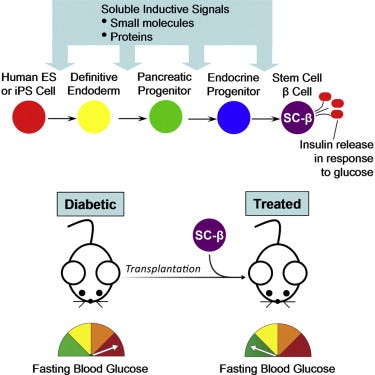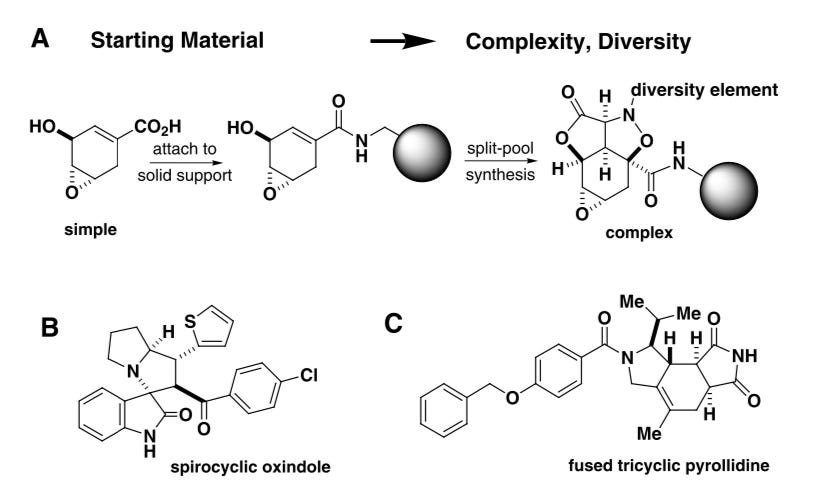Boston is an epicenter of life sciences creativity. With the right mixture of talent, cold weather, and capital, Harvard is an incredible source of great businesses.
Cowan Lab
Building tools to engineer stem cells.Recent
Chad Cowan and his lab has done the work to set the upper limit of gene editing tools in stem cells. Some of the lab’s work was licensed to Mustang Bio. Excitedly, his work helped form the basis of Sanato develop off-the-shelf cell therapies. Developed a method to generate hypoimmunogenic human pluripotent stem cells to minimize GvHDfor cellular therapeutics - https://www.pnas.org/content/116/21/10441.long
Past
Review on the power of induced pluripotent stem cells (iPSC) to functionalize population genetics - https://www.cell.com/trends/cell-biology/fulltext/S0962-8924(17)30180-0

Using iPSCs to validate genetic variants from large-scale population genetic studies for metabolic disorders - https://www.cell.com/cell-stem-cell/fulltext/S1934-5909(17)30032-2

Mooney Lab
Designing new biomaterials to control cell therapies and delivery.Recent
Really exciting paper to invent a cryogel scaffold to mimic a bone marrow transplant - https://www.nature.com/articles/s41587-019-0017-2

Overview of the use of immunomaterials for cancer therapeutics - https://www.nature.com/articles/s41563-018-0147-9
Past
Engineering scaffolds to selectively expand T-cells - https://www.nature.com/articles/nbt.4047- important move forward toward in vivocell therapies:

Arlotta Lab
Modeling the mammalian cerebral cortex.Recent
One of the most exciting papers of 2019 to create a organoid replicating the diversity of the human cerebral cortex - https://www.nature.com/articles/s41586-019-1289-x- relying on single-cell RNA sequencing to monitor/validate cellular diversity within the model:

Review on using organdies to model the human cerebral cortex - https://www.sciencedirect.com/science/article/abs/pii/S095943881930025X?via%3Dihub
Past
Mapping out the potential of using organdies to study neurodegeneration - https://www.sciencedirect.com/science/article/pii/S0955067417301096?via%3Dihub

Hung Lab
Characterizing host-pathogen interactions.Recent
Doing incredible work to understand infectious disease and discover new strategies to respond to them; developing a single-pot assay relying on fluorescent hybridization for a rapid bacterial identification system - https://www.nature.com/articles/s41598-019-40792-3
Creating a pooled chemical screening method to discover drugs against Mycobacterium tuberculosis - https://www.biorxiv.org/content/10.1101/396440v1- characterizing millions of chemical/target combinations to find tens of new compound leads.
Past
Using single-cell RNA sequencing to discover cell-specific lipopolysaccharide modifications driving host-pathogen interactions -
https://www.cell.com/cell/fulltext/S0092-8674(15)01041-7

Melton Lab
Making functional islets that secrete insulin to study and cure type I diabetes.Recent
On a mission to cure type I diabetes (T1D) for his children; overview on regenerating the pancreas to treat T1D - https://www.ncbi.nlm.nih.gov/pmc/articles/PMC6168194/
Using single-cell RNA sequencing to characterize β cell (insulin producer) development - https://www.cell.com/cell-reports/fulltext/S2211-1247(19)30563-7
Led by Adrian Veres (a great math TF), to profile thousands of human cells undergoing in vitro β-cell differentiation - https://www.nature.com/articles/s41586-019-1168-5- discovering a new β-cell specific marker:

Past
In vitrogeneration of stem cell derived β cells - https://www.cell.com/cell/fulltext/S0092-8674(14)01228-8

Buenrostro Lab
Inventing single-cell tools to study genetic variation.Recent
Characterizing chromatin accessibility of 10Ks of cells in the mouse brain (below) - https://www.nature.com/articles/s41587-019-0147-6- and ~100K of human bone marrow-derived cells:

Overview of using single-cell tools to study epigenetic variation - https://www.nature.com/articles/s41588-018-0290-x

Past
Invented ATAC-seq, an important method to measure chromatin accessibility - https://currentprotocols.onlinelibrary.wiley.com/doi/full/10.1002/0471142727.mb2129s109- reliant on the transposase Tn5 to insert barcodes into open-regions of the genome.
Using ATAC-seq to measure chromatin accessibility at a single-cell level - https://www.nature.com/articles/nature14590

Kleckner Lab
Characterizing the biophysics of chromosomes.Past
Overview of Nancy’s legendary career - https://www.ncbi.nlm.nih.gov/pmc/articles/PMC5161267/- did pioneering work to study transposition that ended up enabling ATAC-seq.
Overview of using chromosome capture to study the 3D genome - https://www.ncbi.nlm.nih.gov/pmc/articles/PMC4095847/
Invented 3C, the first tool setting off the study of the 3D genome - https://pdfs.semanticscholar.org/2b0a/db74dc6d9a2dd3e9978dae07e86e70f730b6.pdf

Mapping out how mechanical forces influences chromosome dynamics - https://www.pnas.org/content/pnas/101/34/12592.full.pdf
Schreiber Lab
Using chemical genetics to study biology and disease.Recent
Helped define chemical genetics- screening small molecules for their ability to modulate a pathway not just a certain target; the career of Stuart Schreiber - https://www.princeton.edu/chemistry/macmillan/group-meetings/BDH_Schreiber.pdf
Generating functional group and stereochemical diversity from an azetidinescaffold - https://pubs.acs.org/doi/10.1021/jacs.8b07319- to screen 100Ks of molecules against hundreds of cellular features (i.e. morphology):

Review of the power of synthetic chemistry to study biology - https://www.nature.com/articles/nrd.2018.53- example of compounds generated by diversity-oriented synthesis(as opposed to target-oriented synthesis):

Past
An incredibly important paper to use diversity-oriented synthesis to identify modulators of TOR proteins important in nutrient sensing - http://www.columbia.edu/itc/gsas/g9600/2002/misc/Dissecting_Glucose.pdf
Review comparing diversity-oriented synthesis (DOS) and target-oriented synthesis (TOS) - https://science.sciencemag.org/content/287/5460/1964.long

Overview of using DOS to generate chemical diversity to screen for valuable molecular matter - https://onlinelibrary.wiley.com/doi/abs/10.1002/anie.200300626?sid=nlm%3Apubmed



